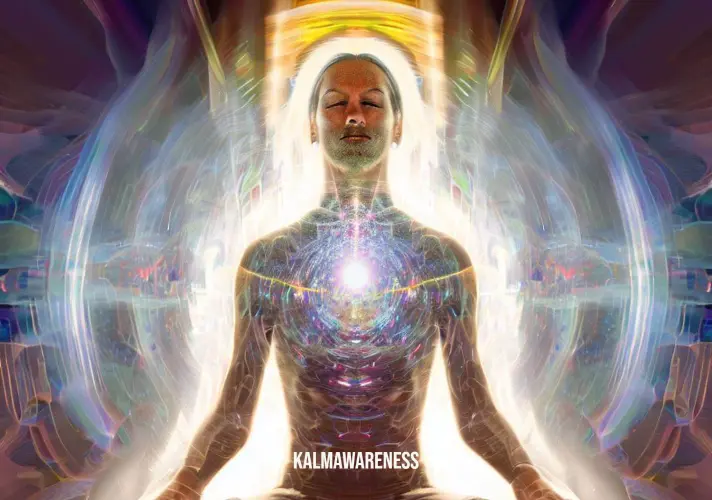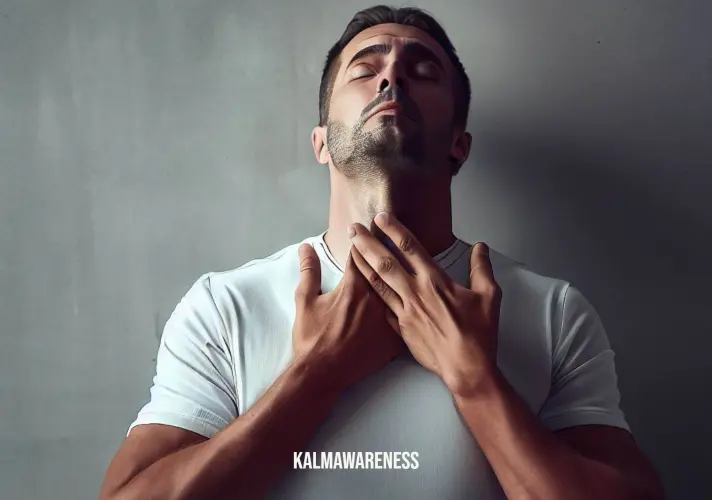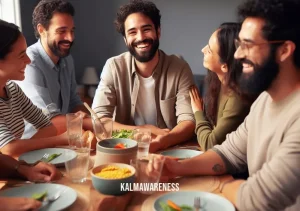Breathe In and Out: Discover the Power of Breath
Take a deep breath. Feel the air fill your lungs, expanding your chest. Now exhale slowly, releasing any tension or stress. The simple act of breathing is often overlooked, yet it holds incredible power to calm the mind, relax the body, and restore inner balance. In this article, we will explore the profound connection between breath and relaxation, delving into various breathing techniques and meditation practices that can help you achieve a state of tranquility and well-being.
The Power of Breath
“Breathe in and out,” a phrase we often hear but rarely pay attention to. However, the way we breathe can significantly impact our mental and physical state. Breathing deeply and consciously triggers the body’s relaxation response, activating the parasympathetic nervous system, which promotes a sense of calm and counteracts the effects of stress.
1. Three Deep Breaths
One simple yet effective technique to restore a sense of calm in any situation is the practice of three deep breaths. Find a comfortable position, whether seated or lying down, and close your eyes. Inhale deeply through your nose, allowing the air to fill your lungs completely. Hold the breath for a moment, and then exhale slowly through your mouth, letting go of any tension or worries. Repeat this process two more times, focusing on the sensation of your breath and the gentle rhythm it creates within you. These three deep breaths can be a quick and accessible tool to bring yourself back to the present moment and release stress.
2. 4-2-6 Breathing
Another powerful breathing technique is 4-2-6 breathing. Begin by finding a comfortable position and take a moment to center yourself. Inhale deeply through your nose for a count of four, feeling your abdomen and chest expand. Hold your breath for a count of two, and then exhale slowly through your mouth for a count of six, allowing the breath to leave your body with a sense of release. Repeat this cycle several times, maintaining a steady rhythm. 4-2-6 breathing promotes relaxation by lengthening the exhalation, which engages the body’s relaxation response and encourages a state of calmness.
3. Affectionate Breathing
Affectionate Breathing is a technique that combines breath awareness with positive emotions, creating a gentle and nurturing experience. Sit comfortably and close your eyes. Take a few moments to focus on your breath, observing its natural rhythm. As you breathe in, imagine inhaling a warm, soothing sensation of affection and love. Feel it fill your body with tenderness and compassion. As you exhale, let go of any negative emotions or tensions, allowing them to dissipate. With each breath, cultivate a sense of self-care and kindness towards yourself and others. Affectionate breathing can be a valuable tool for cultivating self-compassion and promoting emotional well-being.
The Practice of Body Scan Meditation
Continuing our exploration of relaxation techniques, let us turn our attention to the practice of body scan meditation. This practice involves systematically bringing your awareness to different parts of your body, promoting deep relaxation and mindfulness. Body scan meditations can vary in length, ranging from a quick 5-minute scan to a more comprehensive 30-minute practice. Regardless of the duration, the goal remains the same: to bring attention and awareness to the body, cultivating a deep sense of relaxation and inner connection.
To embark on a body scan meditation, find a quiet and comfortable space where you can sit or lie down without interruption. Close your eyes and begin by taking a few deep breaths, allowing yourself to settle into the present moment. Starting from the top of your head, bring your attention to each part of your body, gradually moving downward. Notice any sensations, tension, or areas of relaxation as you gently scan through your body. With each breath, let go of any tension or discomfort, allowing yourself to sink deeper into a state of calm and relaxation.

The Transformative Power of Body Scan Meditation
Welcome to the second chapter of our article on the transformative power of body scan meditation. In this part, we will delve deeper into this practice and explore its profound benefits for self-awareness, relaxation, and overall well-being. So, take a moment to find a comfortable position, relax your body, and let’s embark on this journey of self-discovery.
Deepening Self-Awareness through Body Scan Meditation
Body scan meditation serves as a powerful tool for deepening self-awareness and developing a profound connection with your physical and mental state. As you progress through each body part, you become attuned to the unique sensations, tensions, or areas of relaxation present within you. This heightened awareness allows you to cultivate a deeper understanding of how your body responds to stress, emotions, and daily experiences.
During the body scan, you may notice areas of tension or discomfort that were previously unnoticed. This increased awareness offers an opportunity to address and release these tensions, promoting physical and mental relaxation. By bringing attention to your body in a non-judgmental way, you develop a compassionate relationship with yourself, fostering self-acceptance and self-care.
The Healing Power of Breath
Throughout the body scan meditation, the breath serves as an anchor, grounding you in the present moment and facilitating the release of tension. As you focus on each body part, consciously direct your breath to that area, allowing it to flow with ease. Visualize the breath as a soothing energy that gently washes away any stress or discomfort, leaving behind a sense of calmness and rejuvenation.
Breathe in and out… The rhythmic nature of the breath mirrors the ebb and flow of life itself. As you inhale, imagine drawing in revitalizing energy, and as you exhale, release any stagnant or negative energy. The breath becomes a vehicle for letting go of what no longer serves you, creating space for healing and transformation.
Integrating Guided Body Scan Meditations into Your Routine
Guided body scan meditations can be a helpful resource for deepening your practice and exploring different variations. These meditations provide a structured framework, guiding you through the body scan process with soothing instructions and gentle reminders. Here are a few examples to get you started:
- 10-Minute Body Scan Meditation: This guided meditation offers a condensed yet effective body scan practice. It allows you to cultivate relaxation and self-awareness in just a short amount of time, making it ideal for busy schedules.
- 15-Minute Body Scan Meditation: If you have a bit more time to spare, this 15-minute body scan meditation provides a more in-depth experience. It allows for a thorough exploration of the body, promoting deep relaxation and self-connection.
- 30-Minute Body Scan Meditation: For those seeking a longer and more immersive practice, this 30-minute body scan meditation offers an extended journey of self-exploration. It invites you to dive deeper into each body part, fostering a profound sense of relaxation and presence.
Remember, the key to incorporating body scan meditation into your routine is consistency. Aim to practice regularly, even if it’s just for a few minutes each day. Over time, you will cultivate a greater sense of body awareness, relaxation, and overall well-being.
Embracing the Present Moment
One of the fundamental aspects of body scan meditation is the cultivation of mindfulness—the practice of being fully present in the current moment. As you engage in the body scan, allow yourself to let go of past worries or future concerns. Instead, bring your attention to the sensations and experiences that arise in the present moment.
Embracing the present moment through body scan meditation can have profound effects on your overall well-being. It helps to alleviate stress, reduce anxiety, and promote a sense of groundedness and clarity. By redirecting your focus from external distractions to the internal landscape of your body, you create a space for inner peace and self-discovery.
Breathe in and out… With each breath, immerse yourself in the present moment. Let go of the busyness of the mind and connect with the wisdom and stillness that resides within.
Enhancing Your Body Scan Practice with Mindful Movement
While body scan meditation is often practiced in a still and relaxed state, you can enhance its effects by incorporating mindful movement. After completing the body scan, take a few moments to stretch gently and bring awareness to the physical sensations in your body. Engage in slow and deliberate movements, such as gentle yoga poses, walking meditation, or tai chi, allowing the body to integrate the benefits of the practice.
Exploring Further Resources
To deepen your understanding and practice of body scan meditation, consider exploring additional resources available. Here are a few articles and resources related to meditation and mindfulness:
- Cuimhnich: The Art of Mindful Living: Discover the ancient wisdom of mindfulness through the Scottish practice of Cuimhnich.
- Daily Meditations from the Journey: Access a collection of daily meditations that offer guidance and inspiration on your meditation journey.
- DBT Loving-Kindness Meditation: Explore the practice of loving-kindness meditation, which cultivates compassion and goodwill towards yourself and others.
- Drawing Attention to Yourself: The Art of Mindful Art: Discover how the process of creating art can serve as a form of meditation and self-expression.
Breathe in and out… As you explore these resources, remember to approach your practice with an open mind and heart. Allow the wisdom of your breath and the transformative power of body scan meditation to guide you on your journey of self-discovery and inner peace.

The Gateway to Relaxation: Exploring Breathwork
Welcome to the next chapter of our article on the transformative power of breath. In this section, we will delve into the concept of breath as a gateway to relaxation and explore various breathing exercises that can enhance your well-being. So, take a moment to find a comfortable position, bring your awareness to your breath, and let’s dive into the world of breathwork.
The Art of Conscious Breathing
Conscious breathing, also known as breathwork, involves bringing conscious awareness to your breath and intentionally modifying its rhythm and depth. By engaging in specific breathing techniques, you can influence your physiological and psychological state, promoting relaxation, focus, and a sense of inner calm.
1. Deep Belly Breathing
One foundational breathing technique that can instantly induce a state of relaxation is deep belly breathing. This technique focuses on diaphragmatic breathing, where you expand your belly as you inhale and gently contract it as you exhale.
To practice deep belly breathing, find a comfortable seated or lying position. Place one hand on your abdomen, just below your ribcage. Take a deep breath in through your nose, allowing your belly to expand as you fill your lungs with air. Feel your hand rise as your abdomen expands. Then, exhale slowly through your mouth, feeling your belly gently contract. Repeat this process for several breaths, allowing each inhalation and exhalation to become slower and more effortless.
Deep belly breathing engages the parasympathetic nervous system, signaling to your body that it’s safe to relax and unwind. It can be particularly helpful during moments of stress, anxiety, or when you simply need to take a moment to find your center.
2. Box Breathing
Another powerful breathwork technique is box breathing, also known as square breathing. This technique involves equalizing the length of your inhale, hold, exhale, and another hold, creating a structured and balanced breath pattern.
To practice box breathing, start by finding a comfortable position and bring your awareness to your breath. Inhale deeply through your nose to a count of four, allowing your lungs to fill with air. Then, hold your breath for a count of four. Exhale slowly and completely through your mouth for a count of four. Finally, hold your breath again for a count of four before beginning the next cycle. Repeat this process for several rounds, maintaining a steady rhythm.
Box breathing helps to regulate your breath, calming your nervous system and bringing a sense of balance and equilibrium. It can be a valuable practice for promoting focus, reducing anxiety, and finding a sense of inner stillness.
3. Alternate Nostril Breathing
A powerful breathwork technique rooted in ancient yogic traditions is alternate nostril breathing, also known as Nadi Shodhana. This technique involves alternating the flow of breath between the left and right nostrils, balancing the energies within the body and promoting harmony.
To practice alternate nostril breathing, sit comfortably and use your right hand to gently close your right nostril with your thumb. Inhale deeply through your left nostril. At the top of your inhale, release your thumb and use your ring finger to gently close your left nostril. Exhale slowly and completely through your right nostril. Then, inhale through your right nostril, close it with your thumb, and exhale through your left nostril. Continue this alternating pattern for several rounds, finding a smooth and relaxed rhythm.
Alternate nostril breathing is known to calm the mind, reduce stress, and enhance mental clarity. It harmonizes the left and right hemispheres of the brain, creating a sense of balance and equilibrium within.
Discovering the Power of Breathwork
Breathwork is a versatile practice that offers a wide range of benefits for physical, mental, and emotional well-being. It serves as a powerful tool to regulate your nervous system, release tension, and cultivate a deeper connection with yourself.
Breathe in and out… As you explore the world of breathwork, consider incorporating different techniques into your daily routine. Experiment with deep belly breathing, box breathing, alternate nostril breathing, and other variations. Listen to your body and find the techniques that resonate with you the most.
Exploring Further Resources
To deepen your understanding and practice of breathwork, consider exploring additional resources available. Here are a few articles and resources related to breathwork and meditation:
- 55 Breaths Per Minute: Discover the concept of coherent breathing and its potential benefits for relaxation and stress reduction.
- Affectionate Breathing: Explore a breathwork technique that combines breath awareness with positive emotions, cultivating a sense of self-care and compassion.
- Alkaline Breathing: Learn about the alkaline breathing technique, which focuses on creating a more alkaline state in the body for enhanced well-being.
Breathe in and out… As you delve into these resources, allow the power of breathwork to guide you on a journey of self-discovery, relaxation, and inner transformation.

The Harmony of Breath and Meditation: Deepening Your Relaxation Journey
Welcome to the next chapter of our article, where we will explore the profound connection between breath and meditation. By combining these practices, you can unlock new dimensions of relaxation, inner peace, and self-discovery. So, take a moment to find a comfortable position, bring your awareness to your breath, and let’s embark on this harmonious journey of breath and meditation.
The Power of Mindful Breathing
Mindful breathing lies at the heart of many meditation practices. It serves as an anchor, grounding you in the present moment and deepening your awareness of the mind-body connection. By directing your attention to the sensations and rhythm of your breath, you create a space for stillness and inner calm.
Breathe in and out… As you inhale, feel the gentle expansion of your lungs. Notice the coolness of the incoming breath. And as you exhale, feel the release and warmth of the outgoing breath. With each breath, you have the opportunity to let go of tension, distractions, and worries, allowing yourself to fully inhabit the present moment.
Breathing Meditation Techniques
There are various breathing meditation techniques you can explore to deepen your relaxation journey. Here are a few examples:
1. Mindful Breath Awareness
In this practice, the focus is on observing the breath as it naturally flows in and out of your body. Find a comfortable position and bring your attention to your breath. Notice the sensations of the breath at the tip of your nose, the rise and fall of your abdomen, or the gentle expansion of your chest. Simply observe the breath without trying to control it or judge its quality. If your mind wanders, gently bring your focus back to the breath. This practice cultivates present-moment awareness and helps to quiet the mind.
2. Counting the Breath
Another technique is counting the breath. As you inhale, mentally count “one,” and as you exhale, count “two.” Continue this pattern, counting up to ten, and then start again from one. If you lose track or get distracted, simply return to one. This practice brings focus and concentration to the breath, enhancing your ability to stay present and centered.
3. Breath Mantra Meditation
In this practice, you can incorporate a soothing mantra or affirmation that aligns with the breath. Choose a word or phrase that resonates with you, such as “peace,” “relax,” or “let go.” With each inhalation, silently repeat the chosen word, allowing it to infuse your entire being. As you exhale, release any tension or stress, surrendering to the present moment. This technique combines the power of the breath with the positive intention behind the chosen mantra.
Breathe in and out… As you explore these meditation techniques, remember that there is no right or wrong way to practice. Find what feels comfortable and meaningful to you, adapting the techniques to suit your unique needs and preferences.
Guided Meditations for Relaxation
Guided meditations can be invaluable tools for deepening your relaxation journey. They provide a structured framework, offering soothing guidance and visualizations that support your meditation practice. Here are a few guided meditations you can explore:
- 10-Minute Body Scan Meditation: This guided meditation invites you to cultivate deep relaxation and body awareness through a systematic scan of your body.
- Decision-Making Meditation: Explore a guided meditation that helps you find clarity and inner wisdom when faced with decisions or challenges in your life.
- Daily Meditations from the Journey: Access a collection of daily meditations that offer guidance and inspiration on your meditation journey.
- Divisive Mind Meditation: Discover a guided meditation that helps you navigate and transform the patterns of a divisive or judgmental mind.
Breathe in and out… Allow these guided meditations to support you in your relaxation practice. They provide a space for reflection, self-exploration, and inner peace.
Exploring Further Resources
To deepen your understanding and practice of breath and meditation, consider exploring additional resources available. Here are a few articles and resources related to breathwork and meditation:
- Dr. Gio Cushion: Enhance Your Meditation Experience: Explore the benefits of using a meditation cushion and how it can enhance your comfort and focus during your practice.
- Drzinn: The Journey of Mindfulness: Discover the inspiring journey of Drzinn, a beloved mindfulness teacher, and explore the wisdom and teachings they share.
- Drawing Attention to Yourself: The Art of Mindful Art: Dive into the world of mindful art and discover how creative expression can be a form of meditation and self-discovery.
Breathe in and out… As you engage with these resources, allow the synergy of breath and meditation to guide you on a profound journey of self-discovery, relaxation, and inner transformation.





